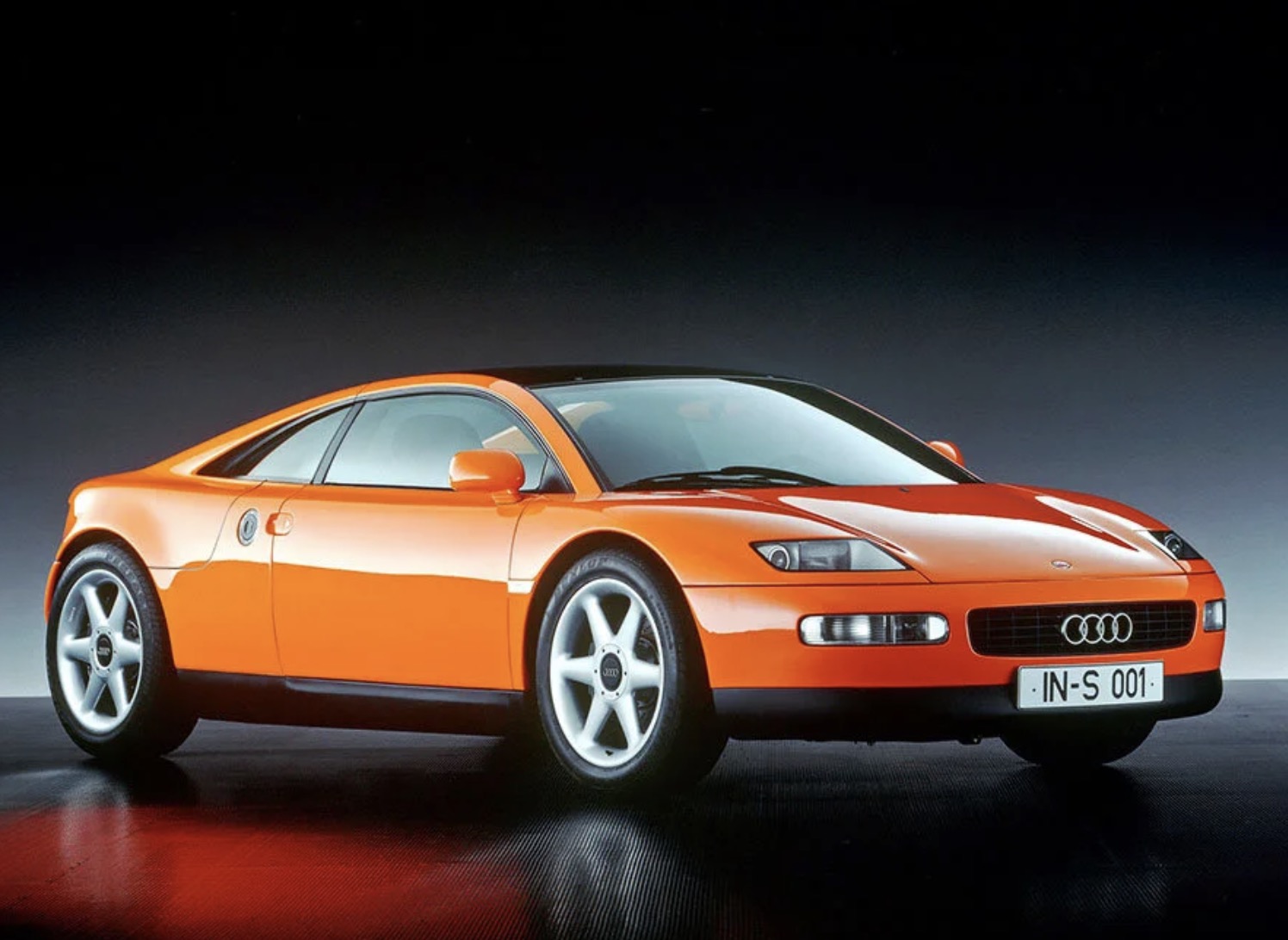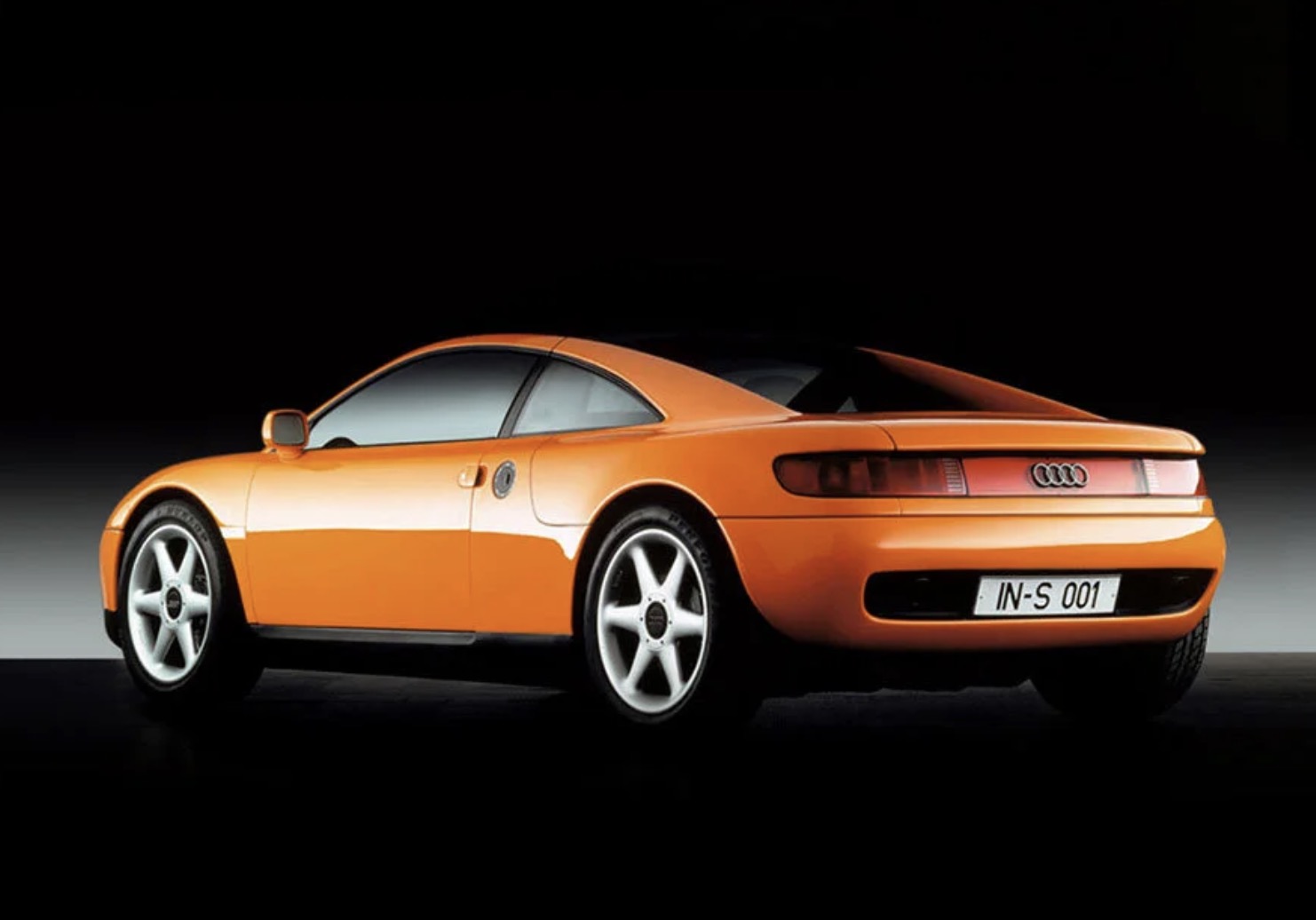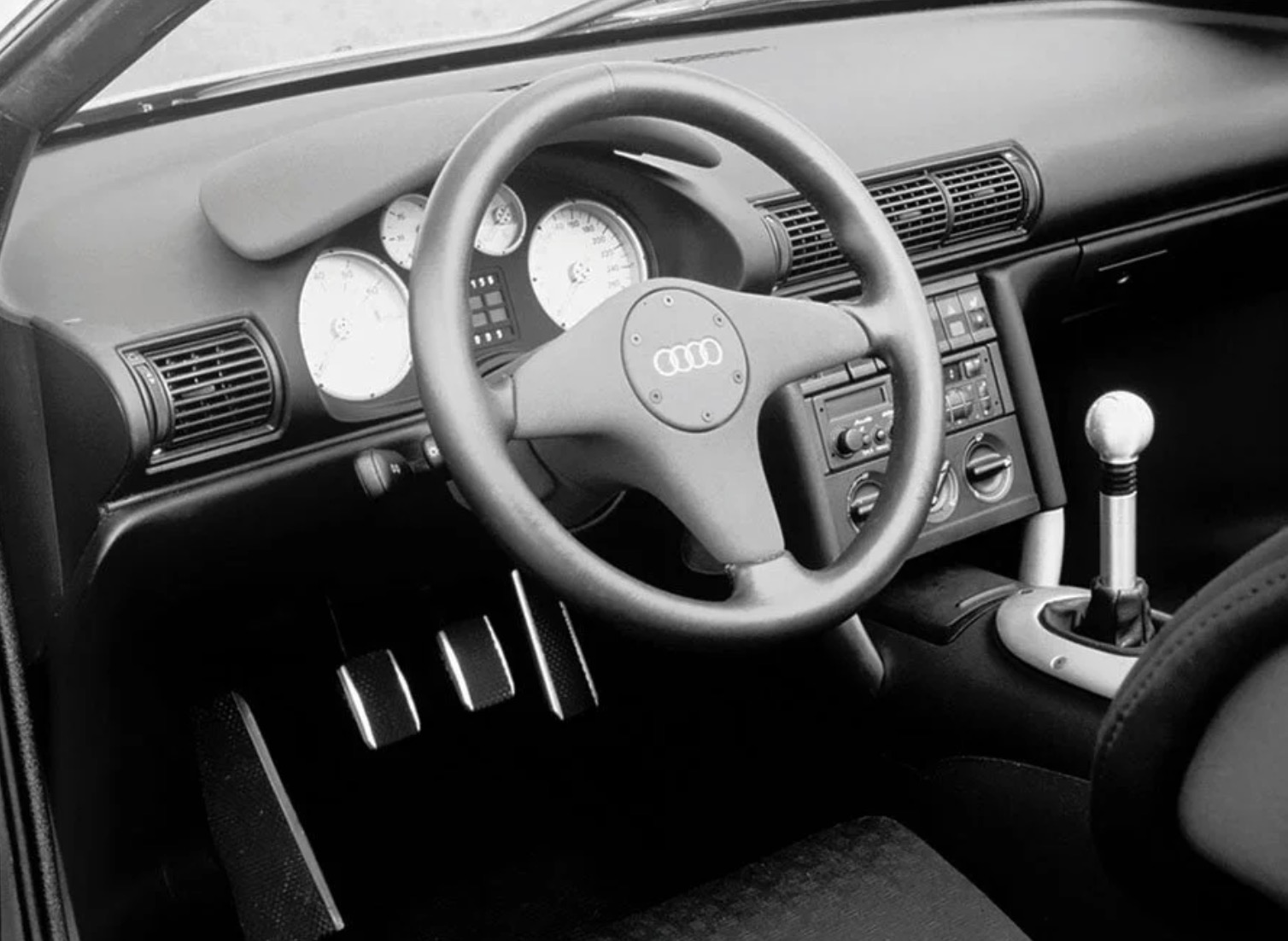At the Frankfurt Motor Show in October 1991, Audi unveiled the Quattro Spyder, a concept that promised to bring accessible, high-performance driving to enthusiasts. Priced to compete at under DM100,000, this mid-engined sports car was a bold departure from Audi’s traditional lineup, blending affordability with the brand’s signature engineering prowess. Powered by a 2.8-liter V6 engine producing around 174 horsepower, the Quattro Spyder featured full-time four-wheel drive, a nod to Audi’s iconic Quattro heritage. Its lightweight aluminum body and removable glass roof panels offered versatility, allowing drivers to enjoy open-top thrills without sacrificing the surefooted handling that made Audi’s all-wheel-drive system legendary. Nearly production-ready, the Spyder was poised to carve a niche in the competitive sports car market.
The Quattro Spyder was met with overwhelming enthusiasm, reportedly garnering around 3,000 pre-orders despite launching during the early 1990s recession. Its sleek design, practical performance, and approachable price point resonated with buyers seeking an alternative to pricier rivals like Porsche. The concept’s aluminum construction kept weight low, enhancing agility, while the removable roof panels added a layer of versatility that set it apart. For Audi, the Spyder represented an opportunity to expand its reputation as a builder of premium performance vehicles, building on the legacy of the original Quattro, which had transformed the brand into a rival for BMW and Mercedes-Benz.



Despite this warm reception, the Quattro Spyder never reached production, derailed by several challenges. First, Audi couldn’t achieve the targeted DM100,000 price point, making the project financially unfeasible. Second, the projected 25,000-unit lifetime production was too small for Audi’s manufacturing capabilities, requiring outsourcing to a subcontractor like Karmann or Porsche. Most decisively, Audi’s CEO, Ferdinand Piëch—grandson of Ferdinand Porsche and son of Louise Porsche—faced a familial conflict. Porsche was teetering on the edge of bankruptcy, and the prospect of an Audi sports car, led by a member of the Porsche-Piëch family, competing directly with Porsche was unthinkable. The project was abandoned, and only one Quattro Spyder was ever built.
The Quattro Spyder remains a tantalizing “what could have been” in Audi’s history. Its enthusiastic reception underscored the brand’s potential to succeed in the sports car market, paving the way for future models like the TT. Though never produced, the Spyder’s legacy endures as a symbol of Audi’s ambition and innovation.